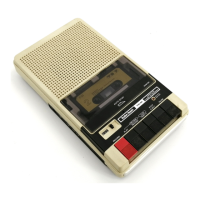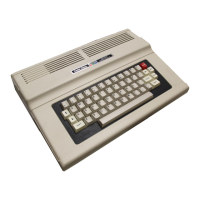The Gate With The Static Output
How many times have you
come
across a logic
element
that
has data screaming into it and an
output
that
just sits there? Probably
too
many
times, especially
in
a major area like
the
address
decoder
where you really
don't
need
that
kind
of
"hassle". Normally, you
attach
a scope
to
the
gate inputs and see if
output
conditions are ever
met.
If
you have
two
gate inputs and
two
scope
channels, you'll
do
OK. But, you can get gray
hair trying
to
analyze an 8-input NAND gate
that
way.
One useful technique you might
try
is
the
input
short. When
confronted
with an unresponsive
OR gate
or
NOR gate,
short
an
input
to
ground.
Normally, a ground
short
will
not
harm a
TTL
output.
If
you have a 2-input NOR gate, for
example, you could
short
one
input
to
ground
and, if
the
gate
is
working properly, you should
see
the
unshorted active signal pass through
the
gate. Move
the
short
to
the
other
input
to
see if
that
pin makes
the
output
respond.
If
so,
chances are you've got a good gate -
try
trou
bleshooti
ng
backwards.
When you need
to
check
the
outputs
of
a
NAN
D
or
an AND gate, shorting inputs
to
ground
is
not
going
to
help (unless
the
outputs
are high for an
AN
0 gate and low for a
NAN
D gate
all
the
time). Do
not
attempt
a
short
to
5 volts. A
short
to
5 volts can damage a TTL
output!
If possible,
find a gate further up
the
line
that
will respond
to
a ground
short
and will cause
one
of
the
gate
inputs
to
go high.
An
example
of
this condition
can be found
on
the
Schematic
in
the
Video
Processor section.
29,
pin 4 supplies an inverted
Latch signal
to
226.
If you
want
pins 13
or
5
of
226
to
go high,
short
29
pin 3
to
ground.
Y.ou
can also
short
the
inputs
to
Latch
227
and
cause some highs on pins 12
or
4
of
Z26.
If
you tried
the
ground-short technique and still
did
not
get
output
activity,
what
then? Well,
assuming
that
you
met
all
input
requirements,
78
you have
two
choices:
1.
the
gate
is
tru
Iy
bad
or
2.
there
is
a ground
or
Vee
short
to
that
output.
To
check for
both
quickly,
cut
the
etch run (if
possible) and free
the
output
pin,
then
retest
the
gate. If you get
output
activity now, you
have a run short.
If
not,
replace
that
package -
it's bad.
(Don't
forget
to
repair
your
etch cut!)
If you suspect a short, analyze
the
voltage level
of
the
gate
output.
A
short
to
VCC
will show
about
5 volts. A normal
TTL
output
gives a level
of
about
3.7
volts. (This applies
to
TTL
only.
CMOS
outputs
swing millivolts from
the
supply
voltage.)
If
you suspect a 5-volt bus short. fol-
low
the
run
to
its terminal point. Carefully
examine places where
the
run gets close
to
a
5-volt bus.
A ground
short
or
a logical low
short
may be
isolated
the
same way. Follow
the
run. A ground
short
may also be analyzed using an oscillo-
scope. Hook up
the
scope
to
the
node
that
you
think
is
shorted.
Turn
off
the
system power
while watching
the
scope trace. If
the
trace does
not
move
in
the
vertical position,
the
short
is
to
ground.
If
the
trace moves up,
then
down, when
power
is
removed,
the
run may be shorted
to
another
TTL
output.
The scope
method
is
also
useful
in
determining if
the
output
transistors
in
a gate are active.
Types
Of
Shorts
There are five
common
shorts.
They
are as
follows:
1.
The
solder splash
short
2. The solder ball
short
3. The solder hair
short
4.
The
etch
short
5. The defective
component
short.

